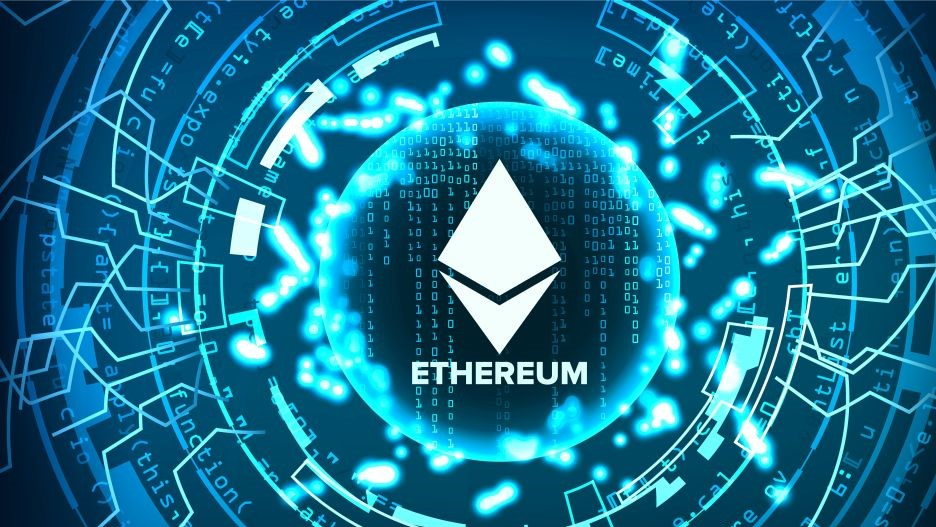Ethereum, often referred to as the second-largest cryptocurrency by market capitalization after Bitcoin, is more than just a digital currency. It is a decentralized platform that enables developers to build and deploy smart contracts and decentralized applications (dApps).
Launched in 2015 by Vitalik Buterin and a team of co-founders, Ethereum has since become a cornerstone of the blockchain ecosystem.
What is Ethereum?
The Basics of Ethereum
Ethereum is an open-source, blockchain-based platform that facilitates the creation of smart contracts and dApps. Unlike Bitcoin, which is primarily a digital currency, Ethereum is designed to be a programmable blockchain.
This means that developers can use Ethereum to create a wide range of applications, from financial services to gaming and beyond.
Ether (ETH): The Native Cryptocurrency
While Ethereum is the platform, Ether (ETH) is the native cryptocurrency that powers it. Ether is used to compensate participants who perform computations and validate transactions on the network. It is also used to pay for transaction fees and computational services on the Ethereum network.
How Ethereum Works
Blockchain Technology
Like Bitcoin, Ethereum operates on a blockchain, which is a distributed ledger that records all transactions across a network of computers. Each block in the chain contains a list of transactions, and once a block is added to the chain, it cannot be altered. This ensures the integrity and security of the data.
Smart Contracts
One of the most innovative features of Ethereum is its support for smart contracts. Smart contracts are self-executing contracts with the terms of the agreement directly written into code. They automatically execute and enforce the terms of the contract when predefined conditions are met, eliminating the need for intermediaries.
Decentralized Applications (dApps)
Ethereum allows developers to build decentralized applications, or dApps, which run on the blockchain rather than a centralized server. These applications can range from financial services like lending and borrowing platforms to gaming and social media networks.
Because they run on the blockchain, dApps are inherently secure, transparent, and resistant to censorship.
The Ethereum Virtual Machine (EVM)
What is the EVM?
The Ethereum Virtual Machine (EVM) is the runtime environment for smart contracts in Ethereum. It is a decentralized computer that executes scripts using an international network of public nodes. The EVM is Turing complete, meaning it can execute any computation given enough resources.
Gas: Fueling the EVM
To execute transactions and smart contracts on the Ethereum network, users must pay a fee known as "gas." Gas is a unit that measures the computational effort required to execute operations. The price of gas is denoted in Ether and can fluctuate based on network demand.
Gas fees are paid to miners (or validators, in the case of Ethereum 2.0) who process and validate transactions.
Ethereum 2.0: The Future of Ethereum
What is Ethereum 2.0?
Ethereum 2.0, also known as Eth2 or Serenity, is a major upgrade to the Ethereum network aimed at improving its scalability, security, and sustainability. One of the most significant changes in Ethereum 2.0 is the transition from a Proof of Work (PoW) consensus mechanism to a Proof of Stake (PoS) model.
Proof of Stake (PoS)
In a PoS system, validators are chosen to create new blocks and validate transactions based on the number of Ether they hold and are willing to "stake" as collateral. This is in contrast to PoW, where miners solve complex mathematical problems to validate transactions. PoS is more energy-efficient and allows for greater scalability.
Sharding: Enhancing Scalability
Another key feature of Ethereum 2.0 is sharding, which involves splitting the blockchain into smaller, more manageable pieces called "shards." Each shard can process its own transactions and smart contracts, significantly increasing the network's capacity and reducing congestion.
Use Cases of Ethereum
Decentralized Finance (DeFi)
One of the most prominent use cases of Ethereum is in the realm of decentralized finance, or DeFi. DeFi refers to financial services that are built on blockchain technology and operate without traditional intermediaries like banks. Examples include lending platforms, decentralized exchanges (DEXs), and stablecoins.
Non-Fungible Tokens (NFTs)
Ethereum is also the backbone of the booming NFT market. NFTs are unique digital assets that represent ownership of a specific item or piece of content, such as art, music, or virtual real estate. Because they are built on Ethereum, NFTs are secure, transparent, and easily transferable.
Supply Chain Management
Ethereum's smart contract functionality makes it an ideal platform for supply chain management. Companies can use Ethereum to create transparent and tamper-proof records of product origins, movements, and transactions, ensuring greater accountability and reducing the risk of fraud.
Challenges and Criticisms
Scalability Issues
One of the most significant challenges facing Ethereum is scalability. As the network has grown, it has become increasingly congested, leading to higher gas fees and slower transaction times. Ethereum 2.0 aims to address these issues, but the transition is complex and ongoing.
Environmental Concerns
Ethereum's current PoW consensus mechanism is energy-intensive, leading to concerns about its environmental impact. The transition to PoS in Ethereum 2.0 is expected to reduce the network's energy consumption significantly, but until then, environmental concerns remain a point of criticism.
Regulatory Uncertainty
Like all cryptocurrencies, Ethereum operates in a regulatory gray area in many jurisdictions. Governments around the world are still grappling with how to regulate digital assets, and this uncertainty can pose risks to investors and developers alike.
Conclusion: The Future of Ethereum
Ethereum has come a long way since its inception, evolving from a simple blockchain platform to a robust ecosystem that supports a wide range of applications. With the ongoing development of Ethereum 2.0, the network is poised to become even more scalable, secure, and sustainable.
As the world continues to embrace decentralized technologies, Ethereum is likely to remain at the forefront of the blockchain revolution, driving innovation and transforming industries across the globe.


0 Comments